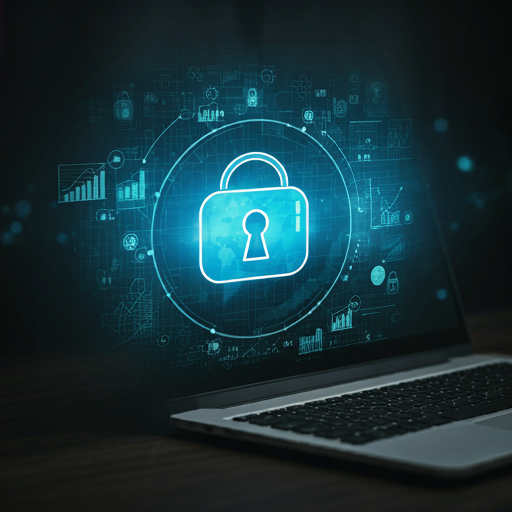Introduction to Cybersecurity in Finance
The Importance of Cybersecurity in the Financial Sector
In today’s digital landscape, cybersecurity is crucial for the financial sector . He must protect sensitive data from various threats. Cyberattacks can lead to significant financial losses and reputational damage. This is a serious concern.
Key areas of focus include:
He should prioritize these aspects. After all, security breaches can undermine trust. Financial institutions must invest in robust cybersecurity measures. It’s essential for long-term success.
Overview of Common Cyber Threats
In the financial sector, common cyber threats include phishing, malware, and ransomware. He must recognize these risks to safeguard assets. Phishing attacks often target sensitive information. This can lead to identity theft.
Malware can disrupt operations significantly. It’s a serious issue. Ransomware demands payment for data recovery. This can be devastating. Awareness is key to prevention.
Understanding Cryptocurrency Vulnerabilities
Types of Vulnerabilities in Cryptocurrency Systems
Cryptocurrency systems face various vulnerabilities, including smart contract flaws and exchange security issues. He must understand these risks to protect investments. Smart contracts can contain coding errors. This can lead to significant financial losses.
Additionally, centralized exchanges are prime targets for hackers. They often lack robust security measures. A single breach can affect thousands. Awareness is essential for safeguarding assets.
Case Studies of Major Cryptocurrency Breaches
In 2014, Mt. Gox suffered a massive breach, losing approximately 850,000 Bitcoins. Tyis incident highlighted vulnerabilities in exchange security. Many investors lost significant amounts. It was a devastating event.
Another notable case is the 2016 hack of Bitfinex, where hackers stole nearly $72 million. This breach exposed weaknesses in wallet security. Trust in exchanges diminished. Security measures must improve.
Best Practices for Securing Cryptocurrency Assets
Implementing Strong Passwords and Authentication
Implementing strong passwords is essential for securing cryptocurrency assets. He should use complex combinations of letters, numbers, and symbols. This significantly reduces the risk of unauthorized access. Simple passwords are easily compromised.
Additionally, two-factor authentication (2FA) adds an extra layer of security. It requires a second verification step. This is a crucial measure. Regularly updating passwords is also advisable. Security should always be a priority.
Utilizing Hardware Wallets for Enhanced Security
Utilizing hardware wallets significantly enhances security for cryptocurrency assets. He should consider these devices for offline storage. This method protects against online threats. Online wallets are more vulnerable.
Key benefits of hardware wallets include:
He must prioritize these advantages. Security is paramount in cryptocurrency management.
Regulatory Frameworks and Compliance
Overview of Global Regulations on Cybersecurity
Global regulations on cybersecurity are evolving rapidly. He must understand these frameworks to ensure compliance. Various jurisdictions impose specific requirements. Non-compliance can lead to severe penalties.
Key regulations include:
These laws emphasize data protection. They also enhance consumer trust. Adhering to regulations is essential for success.
Impact of Compliance on Cryptocurrency Businesses
Compliance significantly impacts cryptocurrency businesses. He must navigate complex regulatory landscapes. Adhering to regulations fosters trust among investors. This is crucial for growth.
Key impacts include:
These factors can affect profitability. However, compliance mitigates legal risks. It is essential for long-term sustainability.
Role of Blockchain Technology in Cybersecurity
How Blockchain Enhances Security Measures
Blockchain technology enhances security through decentralization and transparency. He benefits from reduced risks of data tampering. Each transaction is recorded on a public ledger. This creates an immutable history.
Key advantages include:
These features deter fraudulent activities. Security is significantly strengthened. Trust in the system increases.
Limitations of Blockchain in Preventing Cyber Threats
Blockchain has limitations in preventing cyber threats. He must recognize that it does not eliminate all vulnerabilities. For instance, human error can still lead to breaches. This is a significant concern.
Additionally, smart contracts may contain coding flaws. These can be exploited by malicious actors.
Key limitations include:
These factors can undermine security. Awareness is crucial for effective protection.
Incident Response and Recovery Strategies
Developing an Effective Incident Response Plan
Developing an effective incident response plan is crucial for minimizing damage during a cyber incident. He should outline clear roles and responsibilities. This ensures a coordinated response. Timely action is essential for recovery.
Key components include:
Regular training and simulations enhance preparedness. Awareness is life-sustaining for all staff . A proactive approach mitigates risks effectively.
Steps for Recovery After a Cyber Attack
After a cyber attack, immediate assessment is crucial. He must identify the extent of the breach. This helps prioritize recovery efforts. Data integrity should be verified.
Key recovery steps include:
Monitoring for further threats is essential. Continuous improvement is necessary. Security measures must be reinforced.
Future Trends in Cybersecurity for Finance
Emerging Technologies and Their Impact
Emerging technologies significantly impact cybersecurity in finance. He must stay informed about advancements. Artificial intelligence enhances threat detection capabilities. This leads to quicker responses.
Key technologies include:
These innovations improve data integrity. They also reduce fraud risks. Adapting to these changes is essential. Security strategies must evolve continuously.
Predictions for Cybersecurity in Cryptocurrency
Predictions for cybersecurity in cryptocurrency indicate increased sophistication in attacks. He must prepare for evolving threats. Enhanced regulatory frameworks will emerge to protect investors. Compliance will become more stringent.
Key trends include:
These advancements will bolster defenses. Awareness and education will be critical. Security measures must adapt continuously.
Conclusion: Staying Ahead of Cyber Threats
Continuous Education and Awareness
Continuous education and awareness are vital in cybersecurity. He must stay informed about emerging threats. Regular training sessions enhance employee knowledge. This reduces the risk of breaches.
Key strategies include:
These initiatives foster a security-conscious culture. Awareness is essential for effective defense. Knowledge empowers proactive measures.
Building a Culture of Security in Finance
Building a culture of security in finance is essential for mitigating risks. He must prioritize security at all organizational levels. Encouraging open communication about threats fosters vigilance. This creates a proactive environment.
Key elements include:
These practices enhance overall resilience. A strong security culture protects assets effectively. Awareness is crucial for long-term success.
